General Insurance Blogs, Articles & Updates by - Magma HDI
Have us call you
- RENEW YOUR POLICY
- BUY NEW POLICY
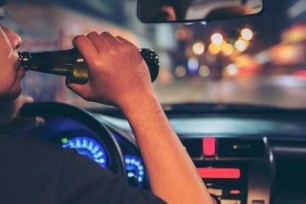
Here are eight common myths about traffic laws in India
The growing number of vehicles plying on the roads have notable implications on traffic congestion and highway accidents. According to statistics recorded by the Indian Road Congress, road accidents occur in India every four minutes!
Most of these incidents happen due to the drivers' incomplete knowledge and failure to follow traffic rules. Although stringent measures are taken to punish the faulty drivers, individuals continue to believe in a few myths regarding the laws that can put their and others' lives at stake.
Here are eight common myths about traffic laws in India that you should not believe.
1. There is no need to follow traffic lights at night:
People think that there is no need to follow traffic lights after a particular hour at night. But, they forget that they are not the only ones driving at night. Although some intersections display blinking amber traffic lights, it doesn't mean the high-speed crossing is allowed on those signals. These blinking traffic lights indicate you to proceed with caution without stopping.
2. You can overtake from the left:
India is a right-hand driving nation, so a driver should overtake another vehicle from the right-hand side; that’s what even our laws say.
However, there is an exception. If the driver in the front has indicated to take a right turn, you can overtake that vehicle from the left side while maintaining a distance. But, always give appropriate indications while turning and even follow the indications given by other drivers.
3. Parking anywhere you want:
Parking, as per our convenience, has always felt normal in India. Parking anywhere is okay if the road doesn't have a 'No Parking' sign. People tend to park their vehicles everywhere as long as there is no towing van insight. However, it is essential to park the cars properly to ease the traffic for everyone.
4. Reversing on a one-way street:
People find it convenient to reverse a car on a one-way street because they don't see this as an offence. In such scenarios, the logical concept of 'vehicle facing the same direction of traffic flow' is untrue and can be a significant driving hazard. It is prohibited to reverse on a one-way road, as it interrupts the ongoing traffic.
5. You don't need insurance for an old car:
Another crucial myth is that we don't require motor insurance policies for old cars. However, driving without valid insurance documents can land you in trouble. So, if you don't have one and are driving your car, buy motor insurance online to avoid distress during your driving.
6. Seat belt is not required for slow driving:
There are countless advertisements put out to emphasize the importance of seatbelts. Yet, many drivers consider that seat belts are not required for low-speed driving. They assume that seat belts are used to avoid being "caught" or "getting a ticket" rather than for safety reasons. The myth that you do not need to wear a seatbelt has put a lot of lives in danger.
7. Hands-free are allowed while driving:
The traffic law has banned using phones while driving; still, many believe that using a hands-free device is acceptable. Is attending calls more important than your life? This shouldn’t be the case, as any distractions while driving can be a potential risk.
8. Drink and drive:
According to traffic laws, the permissible limit of Blood Alcohol Content (BAC) in a person's blood is 30 mg per 100 ml (0.03 percent). To explain it, even one drink of 30 mg can wander your thinking, blur your vision and impair your reflexes. There is a myth that if you drive slowly after a drink, you can still handle the road. Such overconfident drivers can be moving threats to other drivers that are sober and responsible.
Remember, ignorance is not a reason for doing something unlawful on the road. While many drivers are cautious, the mishappening still occurs due to mistakes from the other side. Always have motor insurance for the financial protection of your vehicle. You can buy motor insurance online from a reputed motor insurance company for safety on the road.
Prevention is always better than cure, but not everyone is fully clued about 'safe driving'. So clear up that confusion and misinformation about traffic rules. It is time we change the common motor law myths.
Click HERE to buy a motor insurance online for your vehicle.
Disclaimer: The information provided above is for illustrative purposes only. To get more details, please refer to policy wordings and prospectus before purchasing a policy.
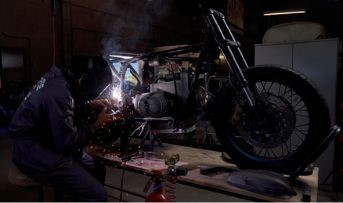
Here are a few top motorcycle welding tips to get the best results
Motorbikes have been an essential mode of travel for decades now. They are not only cost-effective but also justify the style quotient. Most people like customising their motorbikes and replicating their creativity on their bikes. And, welding is one of the best ways to make customisation easy.
If you like customisation, welding is an activity you can enjoy. Instead of toying around with your motorbike to the garage, you can do it yourself. You'll not only save a few bucks this way, but you'll also have a chance to design your bike in the way you want.
If you are a beginner, fret not! Follow this article to learn more about welding. We have listed all the information that will help you get the best results for your motorcycle welding. Additionally, you should also keep in mind that your motorcycle is precious to you, and you should have bike insurance that secures it at all times. This way, even if something unexpected occurs, you'll have something to fall back upon.
What is motorcycle welding?
Welding typically refers to the fusion or culmination of two materials. Either plastic or metal can be used for welding purposes. Metal is used most commonly.
The popularity of motorcycle welding has reached new heights in recent years. Most customised bikes that grace the roads have some modified motorcycle frames created through welding. Nowadays, most people have also taken it up as a hobby to get their hands dirty and give their motorcycle a fresh look.
Tips for effective welding:
The various tips and tricks that you can follow for effective motorcycle welding are as follows:
1. Manage contamination:
The surface plays a crucial role in welding and should be prepared in advance. You should ensure that it is free of contamination, like dust, dirt, or rust. Contamination can hinder welding quality, and many issues can occur if the weld penetrates the base material altogether.
2. Heat management:
Heat management is crucial for effective welding. The thinner materials or panels can be greatly affected by heat. It can even distort several frames if they're too thin. All in all, the heat levels should be checked at all times. If the welds are out-of-position, you should weld in the uphill direction. Due to this, the heat will be distributed evenly without any issues.
3. Be prepared for pipes:
If you're a beginner at motorcycle welding, you'll probably not know about welding pipes. Pipes are used majorly for all the frames used in motorcycles. However, it is noteworthy that welding a pipe is tricky and cannot be treated like a normal weld. It is difficult to fully weld around the circumference of a pipe without committing a mistake. You can try welding the pipe separately a few times to tackle this problem. Another way is to find equipment that will rotate the pipe while your welding machine stays in place. Either way, you'll be able to tackle the pipe welding problem.
If you're a fan of experimentation, welding can work wonders for you. It is important to have a clear idea about motorcycle welding before diving into it. You should remember all the tips and tricks to derive the expected outcome. Stay alert and ensure your and your bike's safety during welding parts. Always wear gloves and a face shield to protect yourself from getting injured. You should also look after your bike's safety and ensure that you don't damage any part of the internal machinery while welding. Purchase bike insurance to compensate in case of damages done due to accidents.
Click HERE to buy reliable bike insurance to provide the best coverage to your bike.
Disclaimer: The information provided above is for illustrative purposes only. To get more details, please refer to policy wordings and prospectus before purchasing a policy.

Beware of those selfies you might be going for in dangerous locations
The youth of today believe in capturing every moment. Thanks to technology advancements, photographing a memory takes only a few clicks. With the onset of the age of social validation, clicking unique pictures is the way to stand out in a crowd. People have gone to lengths trying to capture a perfect moment. The results are sometimes outstanding and, other times, an invitation to danger. In this article, we will discuss how selfies have taken a dangerous turn in the past and how to look out for your safety while clicking pictures.
Over the years, we have seen a rapid rise in the use of mobile phones in the country. Be it for communication or the accessibility that a phone brings, people of every age group have invested in a smartphone. What comes as a shock is that India has a record number of deaths caused by selfies. News about people drawing, falling off a cliff, and car accidents became part of our daily lives.
How do we avoid these situations? Let's take a look at how.
1. Maintain a safe distance:
If you intend to take selfies on a bridge or a high-rise area, it is best to maintain a distance of a few feet to ensure your safety. The weather at such locations is highly unpredictable, making the site more challenging to manoeuvre. Avoid leaning too far, and stay away from the railings. If you want to catch the view more closely, invest in a sturdy and good-quality selfie stick that can be extended further. This way, you can rest assured that you are getting the best picture while being safe and responsible.
2. Avoid busy roads:
The roads in India are almost always crowded with people and vehicles. Everything starting from pedestrians to rickshaws and trucks, take the same road. To avoid congestion and accidents, avoid taking selfies on overcrowded roads. Not only are you putting yourself at the risk of getting hit by a vehicle, but you are also running a risk of mugging and robbing. It is best to keep your phones and cameras inside your bag for safekeeping.
3. Avoid water bodies:
The beautiful picture of water washing your feet and waves crashing from across is a sight to behold. But did you know that most selfies-related accidents occur by drowning? If you want to take images around beaches, rivers, or waterfalls, maintain a safe distance from the water. Water is powerful and is capable of dragging you with it. Being mindful of your surroundings will keep you safe and help you revel in the beauty of the space.
4. Be present at the moment:
No matter the number of selfies you take, none of them will be as meaningful as the experiences of exploring a new place. Try to interact with the locals and understand the place's culture to make lifetime memories. Explore new food options and learn how to make them, and do not forget to collect souvenirs as memories from the journey.
These were a list of simple tips that you can follow to keep yourself safe while clicking selfies. Remember that being mindful of your surroundings and taking adequate steps to ensure your safety is crucial when exploring new places. If you find yourself in situations like these, get help as soon as possible. And to cover the costs of such accidents and mishaps, invest in the best personal accident insurance India. Personal accident insurance is a smart way to safeguard yourself against accidents and the costs incurred. Stay safe and ensure the safety of people and places around you.
Click HERE to buy the best personal accident insurance India.
Disclaimer: The information provided above is for illustrative purposes only. To get more details, please refer to policy wordings and prospectus before purchasing a policy.

Look out for these smart tips to save money on medical costs
Expenses on medical treatments are usually unavoidable. All medical costs, from medications to various tests, require a considerable sum, which is an emergency crisis for most families. Healthcare costs can quickly cause worry, stress, and debt, but there are easy ways to avoid such situations. Health insurance is the best way to secure your finances. There are various types of health insurance in India for parents, partners, families, etc.
Thus, this guide will help you learn different tips to save money on medical expenses and stay in the best peace of mind.
1. Check the price of your healthcare providers and tests:
Healthcare costs differ a lot according to different providers. You can find healthcare providers' fees and extra facility charges with the cost estimator tools on your insurer's online portal. Compare the pricing and choose a more affordable option. It will make a massive difference in your pocket.
2. Know your health insurance plan:
One of the most beneficial ways to save money on medical costs is to know your health insurance plan. Carefully read your health insurance policy features and the expenses it covers. Examine whether you have a co-payment option requiring you to pay a deductible before your insurance starts to pay.
Check what and how much your health insurance in India for parents or family covers. Know the list of medications and test your insurance coverage, which can help you avoid unexpected expenses.
3. Know which medical services are free:
Per the Affordable Health Care Act, patients or people with insurance can avail of certain healthcare services for free until they are in the network. Such healthcare services are preventive services that help a person maintain their health, which may include:
● Blood pressure screening
● Vaccinations
● Diet counseling
● Depression screening
● HIV prevention medication
Some medical services are also free for children, such as eye tests, newborn blood screening, wellness visits, fluoride varnish, etc.
4. Opt for a top-up cover:
Avoid taking out an additional policy if you already have health insurance but are still looking for a higher-cost plan. You can take a top-up cover that will offer additional coverage you need with considerable savings on your insurance. However, you can do this by taking out critical illness insurance, saving money without compromising coverage.
5. Go for generic medications:
Generic medications are usually cheaper than prescription drugs. Getting generic medicines can help you save on your medical bills. But you must ensure that your health insurance plan covers your generic medication.
6. Take separate cover for your parents:
Usually, the amount of insurance in family floater cover is calculated according to the age of the oldest person. If you include your parents in the same insurance plan, it may increase the insurance premium. However, you can go for separate health insurance in India for parents, which can help you achieve savings.
7. Stay healthy:
Lastly, you can save money on medical expenses by staying fit and maintaining good health. It will help if you avoid alcoholic substances, smoking, and other dangerous things. You must invest your money in good things such as healthy food, regular exercise, staying positive, and a better sleeping schedule. You can also find a trainer who can help you exercise according to your convenience to maintain health.
Healthcare expenses can put a significant burden on your pocket. With the tips mentioned above, you can save considerable money. However, the best way to keep your money on healthcare expenses is by taking a health insurance plan with comprehensive coverage at an affordable price. Also, look for reliable health insurance in India for parents that fulfills your requirements to ensure the sound health of the entire family.
Click HERE to buy health insurance in India for parents.
Disclaimer: The information provided above is for illustrative purposes only. To get more details, please refer to policy wordings and prospectus before purchasing a policy.
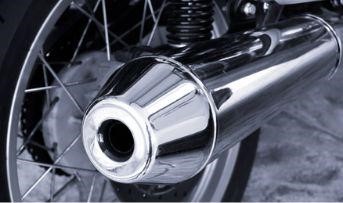
Here are the consequences of installing pressure horns and modified silencers on your bike
Many young bikers love to install pressure horns and modified silencers on their bikes to show off, seek attention, stand out in a crowd, and make their presence felt. It is their style statement and a way of saying they have arrived.
However, people around you can get distracted and panicked when you suddenly blow your high-decibel pressure horn in a crowded street. They may lose their balance and control, may swerve, and meet with an accident.
Here are the consequences of installing pressure horns and modified silencers on your bike.
1. Fines:
The Motor Vehicles Act of 1988 is an act that consolidates and amends the laws that govern motor vehicles and their running in India. According to the amendment of section 190(2) of the Motor Vehicles Act in the year 2019, causing air and noise pollution by installing pressure horns and modified silencers on your bike can attract a penalty of up to Rs.10000/- and imprisonment of up to six months. This fine will be imposed if your pressure horn or modified silencer produces more than 80 decibels of noise.
2. Functioning and mileage:
Other than attracting fines and penalties, we should also consider the consequences of installing pressure horns and modified silencers on the functioning of our bikes. Pressure horns create undue load on the battery of our bike. It can make it weak and damage it in the long run. If we have not used the bike for long and the battery is not charged, using the pressure horn in stationary mode can kill the battery. You will not be able to use the self-start option in this case and get stuck.
Installing modified silencers may sound cool, but it can worsen the mileage of your bike by around 15%-20%. Modified silencers directly impact the engine pulling capacity of your bike. You may need to go for an engine tuning too. An acceleration tuning setting of your engine due to a drop in its pulling power can lower the mileage of your bike.
Modifying silencers will also involve changing the original angle of the exhaust opening. This may increase the total length of your exhaust pipe and the number of bends in it. Both cases lead to a lowering of the velocity of gases movement in the exhaust, resulting in a higher generation of emissions. Higher emission means higher fuel consumption.
Hence, be ready to shell out more on your fuel cost with modified silencers. Also, it can damage your bike engine too in the long run.
3. Drain on your wallet:
No modification to your bike comes for free. The same applies to installing pressure horns and modified silencers on your bike. A pressure horn can cost double the regular horn in a bike or even more. Garages charge hefty amounts starting from INR 2500 and above for silencer modification of your bike.
Installing pressure horns and modified silencers on bikes is usually a style statement for the young generation. Bike enthusiasts love to fiddle with their bikes and make them look fancy. Customising the bike can make you stand out in the crowd. However, such modifications pose a negative impact on the environment and people. We should understand that high noise emission often leads to nuisance creation on the roads and disturbs people around us.
As a responsible driver and law-abiding rider, always follow the traffic rules and avoid the above modifications, which may land you in trouble. Also, be sensible to have two wheeler insurance online India to avoid any financial hassles against mishaps and accidents. Premium amounts can be easily compared between various policies and involve no paperwork. Also, it secures and covers you like any other offline policy without compromising quality.
Click HERE to buy your two wheeler insurance online India.
Disclaimer: The information provided above is for illustrative purposes only. To get more details, please refer to policy wordings and prospectus before purchasing a policy.
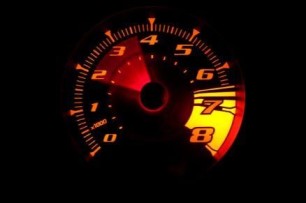
Complete guide on rev matching on bikes
In India, the majority of motorcycles lack a slipper clutch. While learning motorcycle, many people find it challenging to downshift correctly. The engine comes under stress because they typically downshift while holding the clutch, which results in the higher gear accelerating harder than the lower gear at the same speed. To match that speed on the lower gear for a seamless transfer, one should preferably rev a bit higher before downshifting. Otherwise, you would be "engine-braking," which is not an intelligent way to slow down.
The correct way of downshifting is to blip the throttle between shifts to match the revs to the speed. This is also known as revving. In this post, we are talking all about it. So, without further due, let's get into it.
How to rev-match correctly?
● As you press the brakes, hold the clutch and downshift as you start to slow down (do not release the clutch yet).
● Now, "blip" the throttle while maintaining clutch pressure to increase engine RPM gently.
● As soon as the engine starts to rev, let go of the clutch instantly.
● Don’t forget to keep carefully applying the brakes. When you downshift, the aim is to match the revs needed for the bike to move at that precise pace.
● If your bike jerks and slows down unexpectedly, it means that the engine's RPM wasn't high enough. Try to rev it up further the next time you try it.
● The last step would be to practice and practice. Getting it right the first time is not necessary. Don't give up. You will learn how to downshift with time.
The importance of rev-matching.
Now that you know what occurs when your motorbike is rev-matched, let's talk about its significance. Downshifting without rev-matching may cause a significant shock in the motor while travelling at high speeds, especially on large bikes with high horsepower output. The result will be a back wheel that hops, skips, and steps out of alignment. In a scenario like this, controlling the motorcycle at high speeds requires excellent control and precision. The shock won't be as extreme or dramatic on motorcycles with less power, but it still has the potential to cause an accident.
Matching your RPM reduces engine wear and tear, yet another crucial justification for rev-matching. The shock that results from improper rev matching puts more strain on the engine and gearbox, among other parts.
Does rev matching consume more fuel?
The forceful use of the accelerator does cause it to use somewhat more fuel, but only little than usual.
If done properly, rev-matching can assist you in downshifting efficiently and reduce stress on your engine and clutch. It's a tactic that bikers employ frequently. It's crucial to keep in mind that you don't have to match your revs perfectly at first when you're practicing. To master, like with any other ability, rev-matching needs considerable practice. You will eventually be able to tell when your engine and road speed are in sync.
Take your first step towards rev-matching today, and don't forget to be safe. Riding on roads is always an invitation to mishaps that may be a potential threat to you and your bike. Always stay alert while riding, wear a protective gear helmet, and avoid overspeeding. Do not forget to invest in the best bike insurance for an additional safety net over your bike. Buy bike insurance online today and gift yourself with benefits that will eliminate the financial stress off you during panic situations.
Click HERE to buy bike insurance online and get rewarded with effective benefits.
Disclaimer: The information provided above is for illustrative purposes only. To get more details, please refer to policy wordings and prospectus before purchasing a policy.
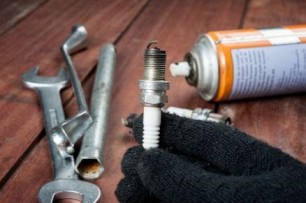
Complete guide to changing the spark plug of your bike
If you are a biker, you know the importance of maintaining your bike in top-quality condition. Some people learn ways to keep their bikes on their own, while others depend heavily on mechanics and service stations to maintain their vehicles properly. In this article, we will understand the functions of one of the most vital components of a bike, the spark plug, and how to maintain and change it.
What is a spark plug?
A device that delivers electric current to the combustion system via the ignition point is known as a spark plug. A spark plug ignites and fuels the vehicle using an electric spark while maintaining the engine pressure.
What key dimensions do you need to look for in a spark plug?
1. Diameter:
The right diameter is imperative for the proper functioning of the spark plug. The wrong diameter can affect the internal components and damage the bike.
2. Reach:
The spark plug's optimal range or reach determines its ignition capacity. If the length of the spark plug is too short, it will fail the ignition. And if it is too long, it might ignite pre-emptively or get jammed and hit the valve inside.
3. Range:
The range of the spark plug is calculated by the distance from the insulator's tip to the ceiling ring. A longer distance will heat the plug and cause pre-ignition, while a shorter range results in a colder plug resulting in easy wear and tear.
4. Gap:
The distance between the centre and the grounded electrode is known as the spark plug gap. The bigger the size of the gap, the bigger the spark produced.
What are the indicators of a damaged spark plug?
1. When you stop the bike, and the engine starts sputtering or idling, it indicates a failed spark plug.
2. If you have trouble starting your bike engine, it could indicate trouble with ignition and the spark plug.
3. If you notice corrosion in various parts around the spark plug, then it is high time to change your spark plug.
4. You might have a faulty spark plug if you notice a poor fuel economy.
Various other factors are indicators of a faulty spark plug. If you notice any problem while riding your bike, it is best to take your vehicle to a mechanic and inspect it as soon as possible.
How to change a spark plug at home?
Although it is advisable to make any changes to your bike under the supervision of a trained mechanic, if you want to change your spark plug, the following list will help you with that.
1. The first thing that you need to do when changing a spark plug is to pull the cap and remove the wire. Remember to do it gently, as a sudden tug or pull can damage the connection and prevent the ignition from happening.
2. Attach the ratchet to the plug and make sure that the plug is fitting properly inside the socket. Using the ratchet, turn the spark plug till it is loose, and then carefully remove it.
3. Inspect the plug for oil and soot deposits or other damage. If the spark plug is greasy and dirty, it is high time to change it with a new one.
4. Before fixing a new spark plug, it is better to check for the range, diameter, and space of the spark plug. The exact spacing of the spark plug will be mentioned in the user manual.
5. Clean the new spark plug and place it neatly to ensure it fits properly.
6. Tighten the spark plug and put the cap back on.
These were the steps you need to follow when you want to change the spark plug of your bike. Remember that if you notice any abnormality with your bike and experience trouble while driving, it is best to get it checked by a mechanic. Invest in bike insurance to safeguard yourself against the cost of repair and maintenance. Bike insurance adds value to your bike and helps you gain a better riding experience with more focus on security and less financial stress.
Click HERE to buy bike insurance.
Disclaimer: The information provided above is for illustrative purposes only. To get more details, please refer to policy wordings and prospectus before purchasing a policy.

Learn about the best tips for ensuring the safety of maintenance workers
Maintenance workers are a highly underrated and neglected section of any organisation until a problem arises. Their day-to-day work requires many risky tasks as they have to come close to machinery or processes and repair them.
Such activities may include the disassembly and reassembly of complicated machinery. The chances of accidents are always high for them as maintenance activities are usually unplanned and involve the possibility of human error.
Let us learn about the best tips for ensuring the safety of maintenance workers.
1. Plan and stick to a schedule:
Maintenance activities should always be planned in advance so that workers get time to do a risk assessment and be mentally prepared for it. A regular safety check schedule should be put in place so that the maintenance workers know in advance the potential hazards of the task.
The tools and personal protective equipment (PPE) should be checked for safety on a routine basis. Proper planning and making a schedule for safety checks will also help the maintenance workers to sharpen their work skills according to the specific needs of the task.
2. Authorisation:
The proper authorisation should be in place for the operation of critical machinery. Only a few should have authorised access to critical work areas or permission to go near critical and complicated machinery. Power should be turned off when the machines are not working. The proper authorisation will ensure that no one turns on machinery or part of it while the maintenance workers are working on it.
3. Appropriate equipment:
The management should ensure that the maintenance workers have the appropriate equipment to perform their tasks. The workers should also consistently check on their equipment, whether a small drill machine or a welding machine. It should not happen that equipment fails to operate while performing a maintenance process and puts the worker and his team in danger.
The management must also ensure that they constantly upgrade and modernise the equipment to match the need of the hour and are not obsolete.
4. Working as a team:
Maintenance works are usually sudden and critical in nature. They come up when something important, such as the main production process, has stopped. The maintenance workers should work as a team because a lack of coordination in maintenance activity may lead to accidents and injuries.
The team should follow all the required safety processes and protocols. Also, they should do a thorough after-use check of all the critical equipment and tools they use. This will ensure the tools are fit for the next maintenance assignment.
5. Final checks and inspection:
The maintenance workers should thoroughly inspect the repair work they have performed. They should do a trial run of the machine only after they are fully satisfied with their work and are sure that everything is back in order. This will ensure their safety as otherwise, they may meet with an accident in case of incomplete repair work.
Maintenance workers are an essential part of an organisation's workforce. They put their lives at risk to fix the errors and bring back life to the stopped processes. While ensuring the safety of the maintenance workers, any company must also go for public liability insurance. It will protect the company if any third-party liability arises from accidents, injuries, or property damage.
Public liability insurance prices vary with a business's individual needs and the scale of its operations. One should compare the prices of policies available with different service providers and then make the purchase decision accordingly.
Click HERE to learn more about public liability insurance prices in India.
Disclaimer: The information provided above is for illustrative purposes only. To get more details, please refer to policy wordings and prospectus before purchasing a policy.


